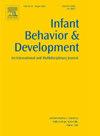33 ~ 36个月婴儿错误信念理解的神经关联
IF 2
3区 心理学
Q3 PSYCHOLOGY, DEVELOPMENTAL
引用次数: 0
摘要
很少有研究涉及儿童错误信念理解的神经关联。在先前的事件相关电位(ERP)研究的基础上,本研究根据婴儿在低要求错误信念任务中的行为表现,将婴儿(N = 45,33 - 36个月)分为及格和失败两组。在一种新的ERP范式中,研究了他们对错误信念和真实信念条件的ERP反应。研究发现,只有在通过低要求行为错误信念任务的婴儿中,枕部电极部位的晚期正波形才能区分错误信念和真实信念条件。相比之下,无论低要求行为错误信念任务的表现如何,前额中央电极位置的晚期负性波形一致地区分了错误信念和真实信念条件。这些发现提出了一种可能性,即支持错误信念理解的敏感神经系统可能在发育早期就出现了。具体地说,在枕部电极上观察到的晚期正波形似乎是婴儿错误信念理解的潜在神经标记。本文章由计算机程序翻译,如有差异,请以英文原文为准。
Neural correlates of false belief understanding in 33- to 36-month-old infants
Very little research has addressed the neural correlates of false belief understanding in young children. Following up on a previous event-related potential (ERP) study examining false belief understanding in 4- to 6-year-old children, the present study grouped infants (N = 45, 33–36 months old) into passers and failers according to their behavioral performance on a low-demands false belief task. Their ERP responses to false belief and true belief conditions were examined in a novel ERP paradigm. The study found that a late positive waveform over the occipital electrode sites distinguished between the false belief and true belief conditions only in infants who passed the low-demands behavioral false belief task. In contrast, a late negative waveform over the frontocentral electrode sites consistently distinguished between the false belief and true belief conditions regardless of low-demands behavioral false belief task performance. These findings raise the possibility that a sensitive neural system supporting false belief understanding may emerge early in development. Specifically, the late positive waveform observed over the occipital electrode sites appears to be a potential neural marker for false belief understanding in infants.
求助全文
通过发布文献求助,成功后即可免费获取论文全文。
去求助
来源期刊

Infant Behavior & Development
PSYCHOLOGY, DEVELOPMENTAL-
CiteScore
4.10
自引率
4.80%
发文量
94
期刊介绍:
Infant Behavior & Development publishes empirical (fundamental and clinical), theoretical, methodological and review papers. Brief reports dealing with behavioral development during infancy (up to 3 years) will also be considered. Papers of an inter- and multidisciplinary nature, for example neuroscience, non-linear dynamics and modelling approaches, are particularly encouraged. Areas covered by the journal include cognitive development, emotional development, perception, perception-action coupling, motor development and socialisation.
 求助内容:
求助内容: 应助结果提醒方式:
应助结果提醒方式:


